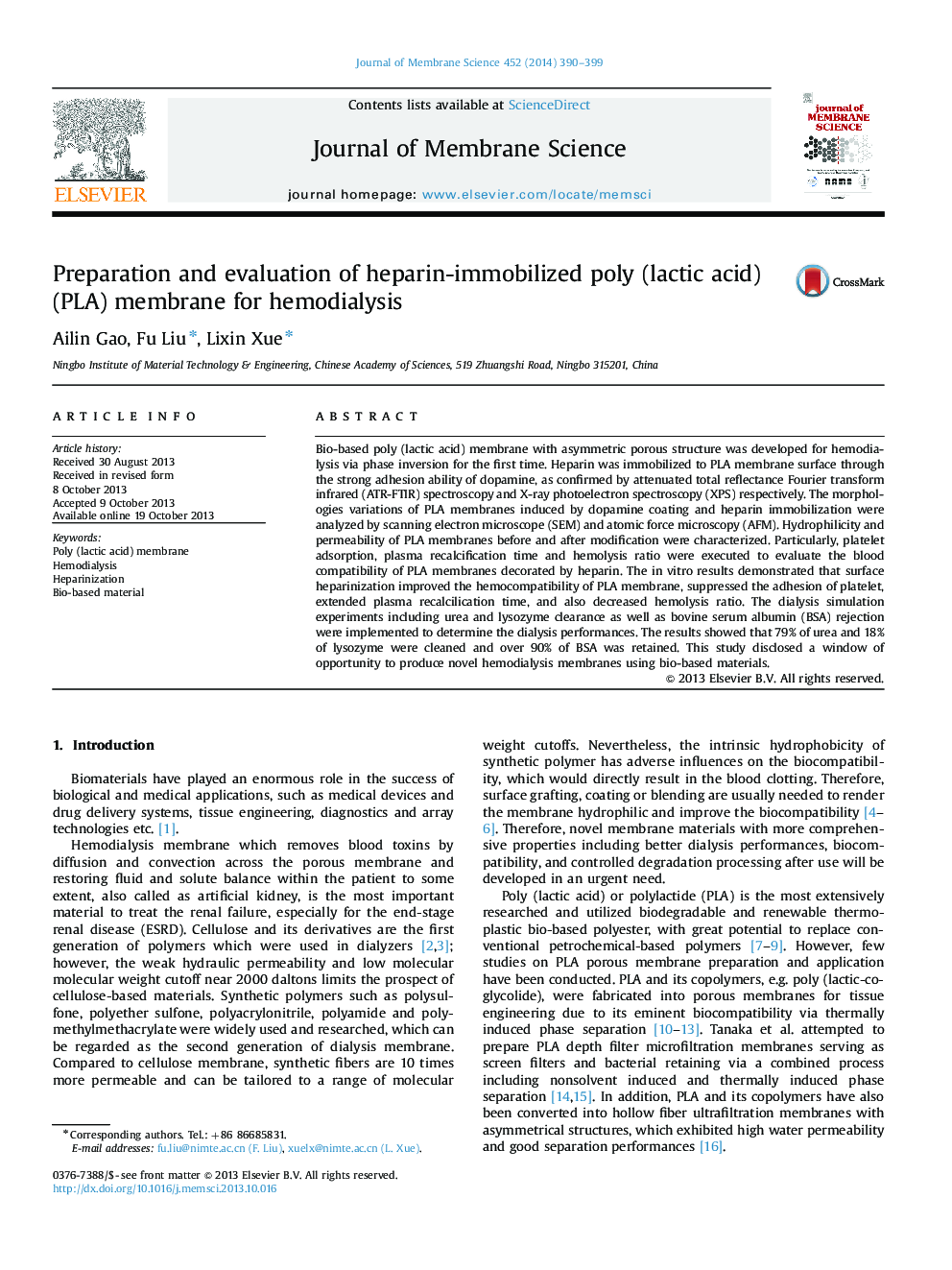| Article ID | Journal | Published Year | Pages | File Type |
|---|---|---|---|---|
| 633724 | Journal of Membrane Science | 2014 | 10 Pages |
Abstract
Bio-based poly (lactic acid) membrane with asymmetric porous structure was developed for hemodialysis via phase inversion for the first time. Heparin was immobilized to PLA membrane surface through the strong adhesion ability of dopamine, as confirmed by attenuated total reflectance Fourier transform infrared (ATR-FTIR) spectroscopy and X-ray photoelectron spectroscopy (XPS) respectively. The morphologies variations of PLA membranes induced by dopamine coating and heparin immobilization were analyzed by scanning electron microscope (SEM) and atomic force microscopy (AFM). Hydrophilicity and permeability of PLA membranes before and after modification were characterized. Particularly, platelet adsorption, plasma recalcification time and hemolysis ratio were executed to evaluate the blood compatibility of PLA membranes decorated by heparin. The in vitro results demonstrated that surface heparinization improved the hemocompatibility of PLA membrane, suppressed the adhesion of platelet, extended plasma recalcilication time, and also decreased hemolysis ratio. The dialysis simulation experiments including urea and lysozyme clearance as well as bovine serum albumin (BSA) rejection were implemented to determine the dialysis performances. The results showed that 79% of urea and 18% of lysozyme were cleaned and over 90% of BSA was retained. This study disclosed a window of opportunity to produce novel hemodialysis membranes using bio-based materials.
Related Topics
Physical Sciences and Engineering
Chemical Engineering
Filtration and Separation
Authors
Ailin Gao, Fu Liu, Lixin Xue,
